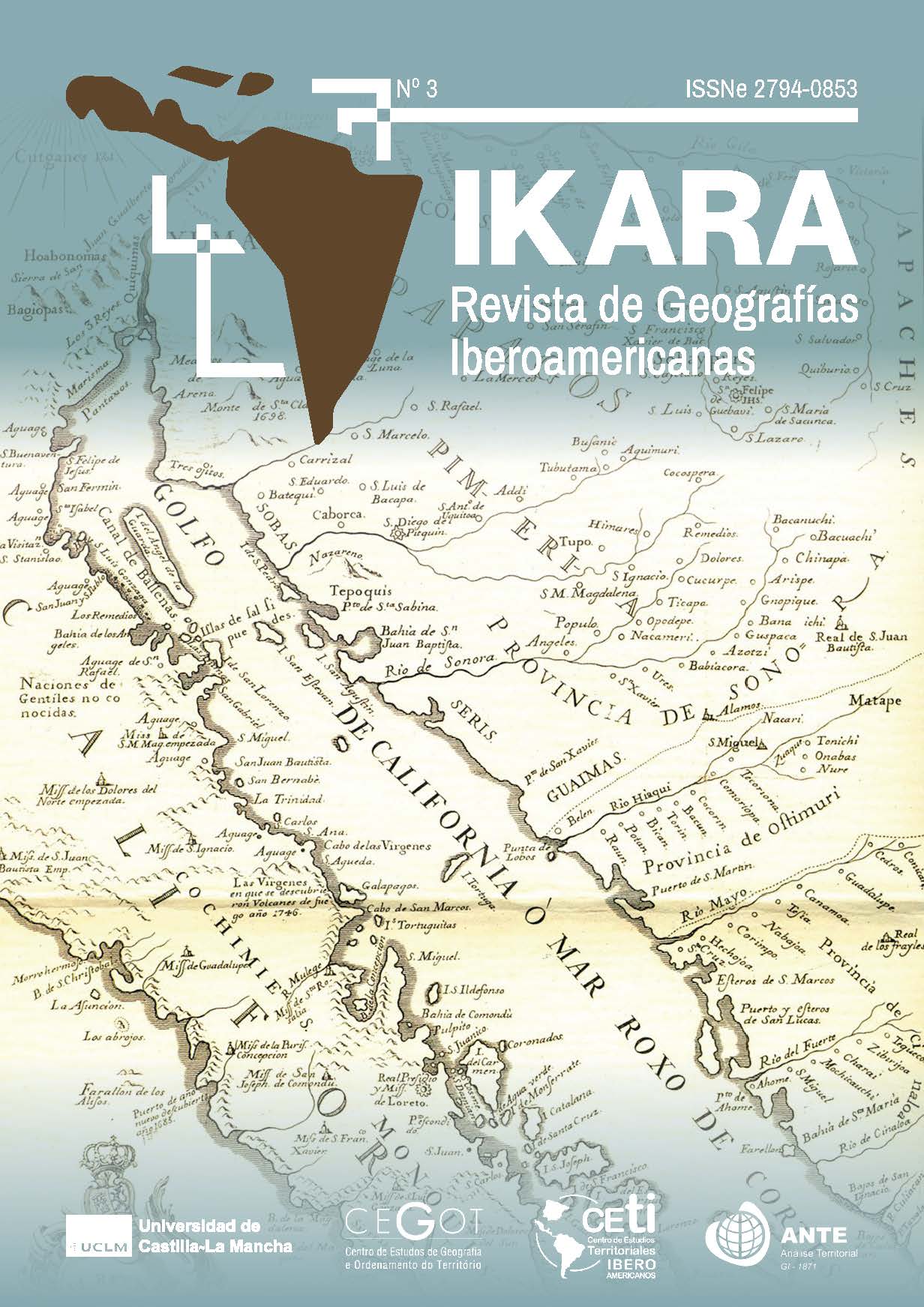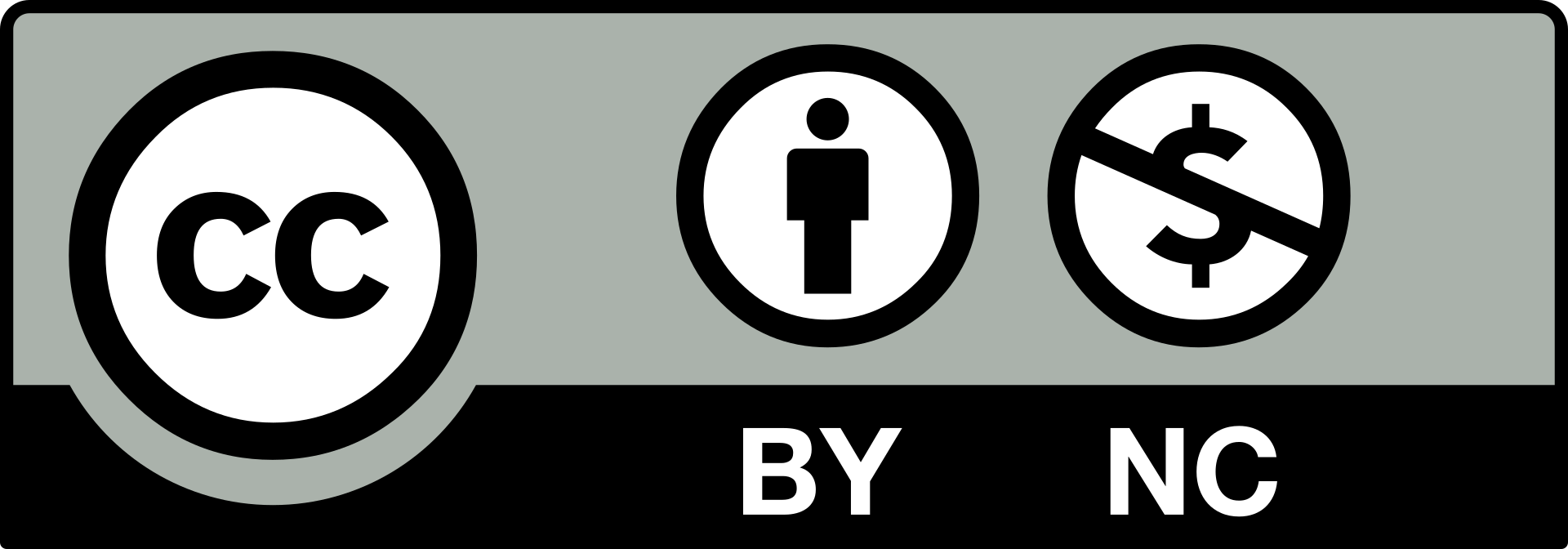Buenas prácticas agrícolas para el control de la erosión hídrica del suelo en los cultivos anuales de las montañas de Guatemala y Nicaragua
DOI:
https://doi.org/10.18239/Ikara.3319Palabras clave:
agricultura de conservación, laboreo, cobertura vegetal del sueloResumen
Los cultivos anuales (maíz, frijol, arveja, brócoli, papa y zanahoria) son muy importantes para la economía de los pequeños productores en las zonas montañosas de Guatemala y Nicaragua. La sostenibilidad de estos cultivos se encuentra en una situación muy precaria, debido a la degradación del suelo por erosión hídrica. Esta situación hace necesario reconducir los sistemas agrícolas actuales hacia modelos sostenibles. Los objetivos de este trabajo han sido: (1) analizar las pérdidas de suelos en los citados cultivos en Guatemala y Nicaragua, y (2) establecer las malas y buenas prácticas agrícolas para un adecuado control de la erosión. Los resultados obtenidos mostraron que las medidas de control de la erosión que se requieren para revertir la situación son: (1) uso preferente de técnicas de no laboreo y (2) mantener una cobertura vegetal mínima para proteger el suelo de la erosión, lo que varía según el sistema de cultivo.
Referencias
Banco Mundial (2023, 17 de marzo). Base de datos sobre salud, nutrición y población del Banco Mundial. http://databank.bancomundial.org/data/reports.aspx?source=estad%C3%ADstics-sobresalud,nutrici%C3%B3n-y-poblaci%C3%B3n
Blanco, R., & Aguilar, A. (2016). The erosion threshold for a sustainable agriculture in cultures of bean (Phaseolus vulgaris L.) under conventional tillage and no-tillage in Northern Nicaragua. Soil Use and Management, 32(3), 368-380. https://doi.org/10.1111/sum.12271
Blanco, R. (2018). An erosion control and soil conservation method for agrarian uses based on determining the erosion threshold. MethodsX, 5, 761-772. https://doi.org/10.1016/j.mex.2018.07.007
Blanco, R., & Enríquez, F. (2018). Erosion Control in the Sustainable Cultivation of Maize (Zea mays L.) and Beans (Phaseolus vulgaris L.) at Two Stages of the Agricultural Cycle in Southern Guatemala. Sustainability, 10(12), 4654. https://doi.org/10.3390/su10124654
Blanco, R., Aguilar, A., & Lima, F. (2021a). Impact of Weed Control by Hand Tools on Soil Erosion under a No-Tillage System Cultivation. Agronomy, 11(5), 974. https://doi.org/10.3390/agronomy11050974
Blanco, R., Enríquez, F., & Lima, F. (2021b). Effectiveness of conservation agriculture (tillage vs. vegetal soil cover) to reduce water erosion in maize cultivation (Zea mays L.): An experimental study in the sub-humid uplands of Guatemala. Geoderma, 404, 115336, 1-11. https://doi.org/10.1016/j.geoderma.2021.115336
Borrelli, P., Robinson, D.A., Panagos, P., Lugato, E., Yang, J.E., Alewell, C., Wuepper, D., Montanarella, L., & Ballabio C. (2020). Land use and climate change impacts on global soil erosion by water (2015-2070). Proceedings of the National Academy of Sciences (PNAS), 117(36), 21994-22001. https://doi.org/10.1073/pnas.2001403117
Ebel, R. (2020). Chinampas: An Urban Farming Model of the Aztecs and a Potential Solution for Modern Megalopolis. HortTechnology, 30(1), 13-19. https://doi.org/10.21273/HORTTECH04310-19
FAO (2017). Directrices voluntarias para la gestión sostenible de los suelos. Organización de las Naciones Unidas para la Alimentación y la Agricultura. FAO. https://www.fao.org/3/i6874es/I6874ES.pdf
FAO (2023, 10 de marzo). Food and Agriculture Organization of the United Nations. FAOSTAT. http://www.fao.org/faostat/en/#data/QC
FAO-ITPS (2015). Status of the World’s Soil Resources (SWSR) – Main Report. Food and Agriculture Organization of the United Nations and Intergovernmental Technical Panel on Soils. https://www.fao.org/3/i5199e/i5199e.pdf
Gholami, L., Sadeghi, S.H., & Homaee, M. (2013). Straw mulching effect on splash erosion, runoff and sediment yield from eroded plots. Soil Science Society of America Journal, 77(1), 268-278. https://doi.org/10.2136/sssaj2012.0271a
Herweg, K. (1996). Field manual for assessment of current erosion damage. Soil Conservation Research Programme, University of Berne. https://www.researchgate.net/profile/Karl-Herweg/publication/339788822_Assessment_of_Current_Erosion_Damage/links/5e662232299bf1744f6ba8ad/Assessment-of-Current-Erosion-Damage.pdf
Hudson, N.W. (1993). Field Measurement of Soil Erosion and Runoff. FAO Soils Bulletin. https://www.fao.org/3/T0848E/T0848E00.htm
Illgner, P.M. (2008). Land Degradation Assessment – Kalukundi (Democratic Republic of the Congo) (Specialist report for Envirolution Consulting (Pty) Ltd).
IPCC (2018). Chapter 3: Impacts of 1.5 °C Global Warming on Natural and Human Systems. Intergovernmental Panel on Climate Change in Global Warming of 1.5 ºC. https://www.ipcc.ch/sr15/chapter/chapter-3/
Kang, M.S., & Banga, S.S. (2013). Global agriculture and climate change. Journal of Crop Improvement, 27, 667–692. https://doi.org/10.1080/15427528.2013.845051
Kreiselmeier, J., Chandrasekhar, P., Weninger, T., Schwen, A., Julich, S., Feger, K.H., & Schwarzel, K. (2020). Temporal variations of the hydraulic conductivity characteristic under conventional and conservation tillage. Geoderma, 362, 114127. https://doi.org/10.1016/j.geoderma.2019.114127
Kumari R.K., de Sherbinin, A., Jones, B., Bergmann, J., Clement, V., Ober, K., Schewe, J., Adamo, S., McCusker, B., Heuser, S., & Midgley, A. (2018.) Groundswell: Preparing for Internal Climate Migration. The World Bank. https://www.worldbank.org/en/news/infographic/ 2018/03/19/groundswell---preparing-for-internal-climate-migration
Leys, A., Govers, G., Gillijns, K., Berckmoes, E., & Takken, I. (2010). Scale effects on runoff and erosion losses from arable land under conservation and conventional tillage: The role of residue cover. Journal of Hydrology, 390, 143-154. https://doi.org/10.1016/j.jhydrol.2010.06.034
Morgan, R.P.C. (2005). Soil erosion and conservation, Third. Blackwell Publishing Ltd.
Murty, D., Kirschbaum, M.U.F., McMurtrie, R.E., & McGilvray, H. (2002). Does conversion of forest to agricultural land change soil carbon and nitrogen? A review of the literature. Global Change Biology, 8, 105-123. https://doi.org/10.1046/j.1354-1013.2001.00459.x
Mutekanga, F.P., Visser, S.M., & Stroosnijder, L. (2010). A tool for rapid assessment of erosion risk to support decision-making and policy development at the Ngenge watershed in Uganda. Geoderma, 160, 165-174. https://doi.org/10.1016/j.geoderma.2010.09.011
Panagos, P., Borrelli, P., Meusburger, K., Yu, B., Klik, A., Jae Lim, K., Lim, J., Yang, J.E., Ni, J., Miao, C., Chattopadhyay, N., Hamidreza S., Hazbavi, Z., Zabihi, M., Larionov, G., Krasnov, S., Gorobets, A., Levi, Y., Erpul, G., Birkel, C., Hoyos, N., Naipal, V., Tarso, P., Oliveira, S., Bonilla, C., Meddi, M., Nel, W., Al Dashti, H., Boni, M., Diodato, N., Van Oost, K., Nearing, M., & Ballabio, C. (2017). Global rainfall erosivity assessment based on high-temporal resolution rainfall records. Scientific reports, 7, 4175. https://doi.org/10.1038/s41598-017-04282-8
Patel, R. (2013). The Long Green Revolution. The Journal of Peasant Studies, 40(1), 1-63. https://doi.org/10.1080/03066150.2012.719224
Piñeiro, M., Trigo, E., & Fiorentino, R. (1979). Technical change in Latin American agriculture. Food Policy, 4, 169-177. https://doi.org/10.1016/0306-9192(79)90097-6
Prosdocimi, M., Tarolli, P., & Cerdà, A. (2016). Mulching practices for reducing soil water erosion: A review. Earth-Science Reviews, 161, 191-203. https://doi.org/10.1016/j.earscirev.2016.08.006
Six, J., Bossuyt, H., Degryze, S., & Denef, K. (2004). A history of research on the link between (micro)aggregates, soil biota, and soil organic matter dynamics. Soil and Tillage Research, 79(1), 7-31. https://doi.org/10.1016/j.earscirev.2016.08.006
Soto, F., & Saramago, A.P. (2019). Migración y desarrollo rural en América Latina y el Caribe. FAO. https://www.fao.org/3/ca5107es/ca5107es.pdf
Stocking, M., & Murnaghan, N. (2001). Handbook for the Field Assessment of Land Degradation. Earthscan Pub. Ltd. https://doi.org/10.4324/9781849776219
Sun, Y., Zeng, Y., Shi, Q., Pan, X., & Huang, S. (2015). No-tillage controls on runoff: A meta-analysis. Soil and Tillage Research, 153, 1-6. https://doi.org/10.1016/j.still.2015.04.007
Turmel, M.S., Speratti, A., Baudron, F., Verhulst, N., & Govaerts, B. (2015). Crop residue management and soil health: a systems analysis. Agricultural Systems, 134, 6-16. https://doi.org/10.1016/j.agsy.2014.05.009
Yu, Z., Zhang, J., Zhang, C., Xin, X., & Li, H. (2017). The coupling effects of soil organic matter and particle interaction forces on soil aggregate stability. Soil and Tillage Research, 174, 251-260. https://doi.org/10.1016/j.still.2017.08.004
Zhang, Y., Zhao, W., Li, X., Jia, A., & Kang, W. (2020). Contribution of soil macropores to water infiltration across different land use types in a desert–oasis ecoregion. Land Degradation and Development, 32(4), 1751-1760. https://doi.org/10.1002/ldr.3823
Descargas
Publicado
Número
Sección
Licencia
Derechos de autor 2023 Rafael Blanco Sepúlveda, Francisco Javier Lima, María Luisa Gómez Moreno, Francisco Enríquez Narváez, Amilcar Aguilar Carrillo

Esta obra está bajo una licencia internacional Creative Commons Atribución-NoComercial 4.0.
Aquellos autores/as que tengan publicaciones con esta revista, aceptan los términos siguientes:
- Los autores/as conservarán sus derechos de autor y garantizarán a la revista el derecho de primera publicación de su obra, el cuál estará simultáneamente sujeto a la Licencia de reconocimiento de Creative Commons que permite a terceros compartir la obra siempre que se indique su autor y su primera publicación esta revista.
- Los autores/as podrán adoptar otros acuerdos de licencia no exclusiva de distribución de la versión de la obra publicada (p. ej.: depositarla en un archivo telemático institucional o publicarla en un volumen monográfico) siempre que se indique la publicación inicial en esta revista.
- Se permite y recomienda a los autores/as difundir su obra a través de Internet (p. ej.: en archivos telemáticos institucionales o en su página web) antes y durante el proceso de envío, lo cual puede producir intercambios interesantes y aumentar las citas de la obra publicada. (Véase El efecto del acceso abierto).



